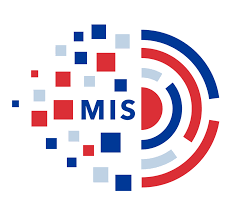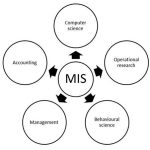Training Summary
Management Information System (MIS) is a computer-based system that collectively provides managers with the information required to organize, manage and analyze the ongoing project operations. In this course, we will cover important MIS topics like roles of MIS in an organization, technologies used in MIS, types of MIS, etc.
What is MIS? Intoduction & Definition
What is MIS?
MIS is the use of information technology, people, and business processes to record, store and process data to produce information that decision makers can use to make day to day decisions.
MIS is the acronym for Management Information Systems. In a nutshell, MIS is a collection of systems, hardware, procedures and people that all work together to process, store, and produce information that is useful to the organization.
The need for MIS
The following are some of the justifications for having an MIS system
- Decision makers need information to make effective decisions. Management Information Systems (MIS) make this possible.
- MIS systems facilitate communication within and outside the organization – employees within the organization are able to easily access the required information for the day to day operations. Facilitates such as Short Message Service (SMS) & Email make it possible to communicate with customers and suppliers from within the MIS system that an organization is using.
- Record keeping – management information systems record all business transactions of an organization and provide a reference point for the transactions.
Components of MIS
The major components of a typical management information system are;
- People – people who use the information system
- Data – the data that the information system records
- Business Procedures – procedures put in place on how to record, store and analyze data
- Hardware – these include servers, workstations, networking equipment, printers, etc.
- Software – these are programs used to handle the data. These include programs such as spreadsheet programs, database software, etc.
Types of Information Systems
The type of information system that a user uses depends on their level in an organization. The following diagram shows the three major levels of users in an organization and the type of information system that they use.

Transaction Processing Systems (TPS)
This type of information system is used to record the day to day transactions of a business. An example of a Transaction Processing System is a Point of Sale (POS) system. A POS system is used to record the daily sales.
Management Information Systems (MIS)
Management Information Systems are used to guide tactic managers to make semi-structured decisions. The output from the transaction processing system is used as input to the MIS system.
Decision Support Systems (DSS)
Decision support systems are used by top level managers to make semi-structured decisions. The output from the Management Information System is used as input to the decision support system.DSS systems also get data input from external sources such as current market forces, competition, etc.
Manual Information Systems VS Computerized Information Systems (MIS)
Data is the bloodstream of any business entity. Everyone in an organization needs information to make decisions. An information system is an organized way of recording, storing data, and retrieving information.
In this section, we will look at manual information systems vs. computerized information systems.
Manual Information System
A manual information system does not use any computerized devices. The recording, storing and retrieving of data is done manually by the people, who are responsible for the information system.
The following are the major components of a manual information system
- People –people are the recipients of information system
- Business Procedures –these are measures put in place that define the rules for processing data, storing it, analyzing it and producing information
- Data –these are the recorded day to day transactions
- Filing system – this is an organized way of storing information
- Reports –the reports are generated after manually analyzing the data from the filing system and compiling it.
The following diagram illustrates how a typical manual information system works

Advantages and Dis-advantages of a manual information system
Advantages:
The following are the advantages of manual information systems
- Cost effective – it is cheaper compared to a computerized system because there is no need to purchase expensive equipment such as servers, workstations, printers, etc.
- Flexible –evolving business requirements can easily be implemented into the business procedures and implemented immediately
Disadvantages:
The following are some of the disadvantages of a manual information system.
- Time consuming –all data entries need to be verified before filing, this is a time consuming task when done by humans. Retrieving data from the filing system also takes a considerable amount of time
- Prone to error – the accuracy of the data when verified and validated by human beings is more prone to errors compared to verification and validation done by computerized systems.
- Lack of security – the security of manual systems is implemented by restricting access to the file room. Experience shows unauthorized people can easily gain access to the filing room
- Duplication of data –most departments in an organization need to have access to the same data. In a manual system, it is common to duplicate this data to make it easy to accessible to all authorized users. The challenge comes in when the same data needs to be updated
- Data inconsistency – due to the duplication of data, it is very common to update data in one file and not update the other files. This leads to data inconsistency
- Lack of backups – if the file get lost or mishandled, the chances of recovering the data are almost zero.
Computerized information system
Computerized systems were developed to address the challenges of manual information systems. The major difference between a manual and computerized information system is a computerized system uses a combination of software and hardware to record, store, analyze and retrieve information.
Advantages and Disadvantages of a computerized information system (MIS)
The following are some of the disadvantages of a computerized information system.
Advantages:
The following are the advantages of computerized information systems
- Fast data processing and information retrieval – this is one of the biggest advantages of a computerized information system. It processes data and retrieves information at a faster rate. This leads to improved client/customer service
- Improved data accuracy – easy to implement data validation and verification checks in a computerized system compared to a manual system.
- Improved security – in addition to restricting access to the database server, the computerized information system can implement other security controls such as user’s authentication, biometric authentication systems, access rights control, etc.
- Reduced data duplication – database systems are designed in such a way that minimized duplication of data. This means updating data in one department automatically makes it available to the other departments
- Improved backup systems – with modern day technology, backups can be stored in the cloud which makes it easy to recover the data if something happened to the hardware and software used to store the data
- Easy access to information – most business executives need to travel and still be able to make a decision based on the information. The web and Mobile technologies make accessing data from anywhere possible.
Disadvantages:
- It is expensive to set up and configure – the organization has to buy hardware and the required software to run the information system. In addition to that, business procedures will need to be revised, and the staff will need to be trained on how to use the computerized information system.
- Heavy reliance on technology – if something happens to the hardware or software that makes it stop functioning, then the information cannot be accessed until the required hardware or software has been replaced.
- Risk of fraud – if proper controls and checks are not in place, an intruder can post unauthorized transactions such as an invoice for goods that were never delivered, etc.
Summary
- MIS is the acronym for Management Information System. It is a collection of people, procedures, data, and information technology that aids managers to make informed decisions.
- Computerized information systems are more efficient compared to manual information systems. Manual information systems are cheaper compared to computerized information systems.
- Transaction processing systems (TPS) are by operational staff to record day to day business transactions, and they are used to make structured decisions
- Management Information Systems (MIS) are used by middle-level managers to make semi-structured decisions
- Decision Support Systems are used by top level managers, and they help top level managers to make unstructured decisions.


